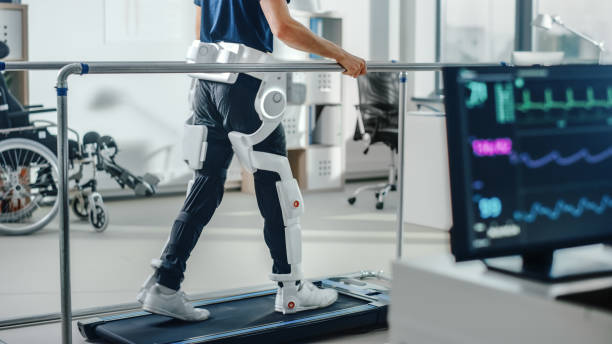Using Remote Rehabilitation Programs for Home Recovery
Remote rehabilitation programs enable patients to continue recovery at home by combining telemedicine, wearable sensors, and structured therapy plans. These approaches aim to maintain continuity of care, support adherence, and extend diagnostic and monitoring capacities beyond clinics while addressing accessibility and privacy concerns.

This article is for informational purposes only and should not be considered medical advice. Please consult a qualified healthcare professional for personalized guidance and treatment.
How does telemedicine support remote care?
Telemedicine offers a platform for regular consultations, video-guided therapy sessions, and asynchronous messaging that keeps clinicians connected to patients. For remote rehabilitation, telemedicine can be used to assess progress, adjust exercise prescriptions, and triage issues that require in-person assessment. Clinicians can observe movement patterns, coach technique, and document outcomes via secure platforms. Integrating telemedicine into a rehabilitation plan helps reduce travel burden, expand follow-up frequency, and prioritize face-to-face visits only when diagnostics or hands-on treatment are necessary.
What role do wearables and monitoring play?
Wearables and remote monitoring technologies collect objective data such as steps, range of motion, heart rate variability, and activity intensity. These devices feed continuous or scheduled measurements into clinical dashboards so therapists can detect trends, flag deviations, and personalize programs. For patients recovering from surgery or neurological injury, monitoring enables early identification of complications or insufficient activity. Choosing devices that balance clinical-grade accuracy with patient comfort improves long-term engagement and provides useful data for decision-making without overwhelming clinicians with noise.
How can adherence and rehabilitation be improved?
Improving adherence combines behavioral design, clear education, and simple technology. Structured schedules, automated reminders, progress visualizations, and brief tele-checks help patients stay on track. Clinicians should set measurable goals and use monitoring data to provide timely feedback. Education about exercise purpose and safety increases motivation and reduces anxiety. For many patients, blended models—periodic in-person sessions complemented by remote follow-up—yield better adherence than purely virtual programs because they preserve accountability and hands-on correction when needed.
How do diagnostics and triage work remotely?
Remote diagnostics rely on validated assessment tools, patient-reported outcomes, and data from wearables or smartphone sensors. Standardized questionnaires, video-based functional tests, and asynchronous symptom reporting allow clinicians to prioritize cases using triage protocols. When red flags appear—such as sudden functional decline or signs suggesting infection—remote triage guides escalation to in-person care or urgent evaluation. Reliable triage depends on clear thresholds, good interoperability between systems, and patient literacy so symptoms are communicated accurately.
How are privacy, datasecurity, and interoperability handled?
Data security and privacy are critical when personal health information moves between devices, apps, and clinical systems. Clinicians and program designers should select platforms with end-to-end encryption, secure authentication, and role-based access controls. Interoperability standards (such as commonly used health data formats and APIs) reduce duplication and support integrated care plans across providers. Establishing consent processes, minimal data collection policies, and routine audits helps protect privacy while enabling necessary data sharing for clinical decision-making.
How to address accessibility, literacy, pediatrics, geriatrics?
Accessibility and digital literacy influence who benefits from remote programs. For pediatric patients, remote care often involves family caregivers and needs age-appropriate engagement tools and clear safety guidance. For geriatric patients, interfaces must be simple, devices comfortable, and support services available to troubleshoot connectivity and use. Programs should provide multimodal education (visual, verbal, written) and consider assistive technologies. Equity-focused design ensures that remote rehabilitation does not exclude patients due to limited broadband, device access, or low health and digital literacy.
Practical considerations for implementation
Successful remote rehabilitation programs blend clinical workflows with technology that matches patient needs. Key considerations include choosing validated monitoring tools, training staff in telemedicine best practices, setting clear escalation pathways, and measuring outcomes with standardized metrics. Pilot testing with representative patients can reveal usability issues and inform iterative improvements. Programs should track adherence, functional gains, and any adverse events to refine safety protocols and demonstrate value to stakeholders.
Conclusion
Remote rehabilitation extends recovery opportunities beyond clinical settings by combining telemedicine, wearables, monitoring, and structured adherence strategies. Addressing privacy, interoperability, and accessibility ensures these programs serve diverse populations, including children and older adults. When integrated thoughtfully with in-person care and robust triage protocols, remote rehabilitation can improve continuity of care and make recovery more convenient and measurable for patients worldwide.





